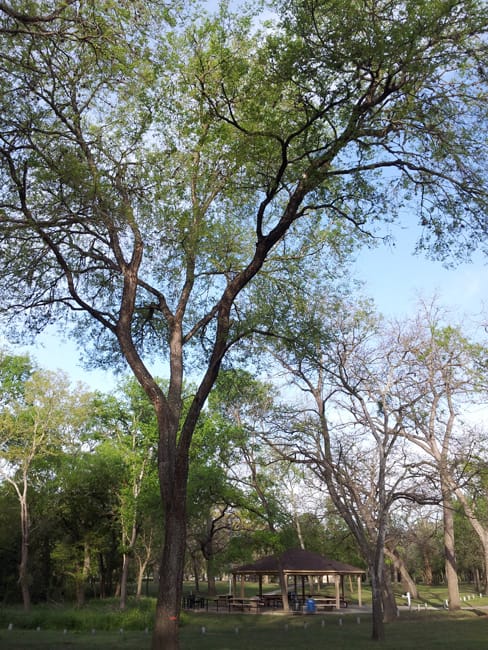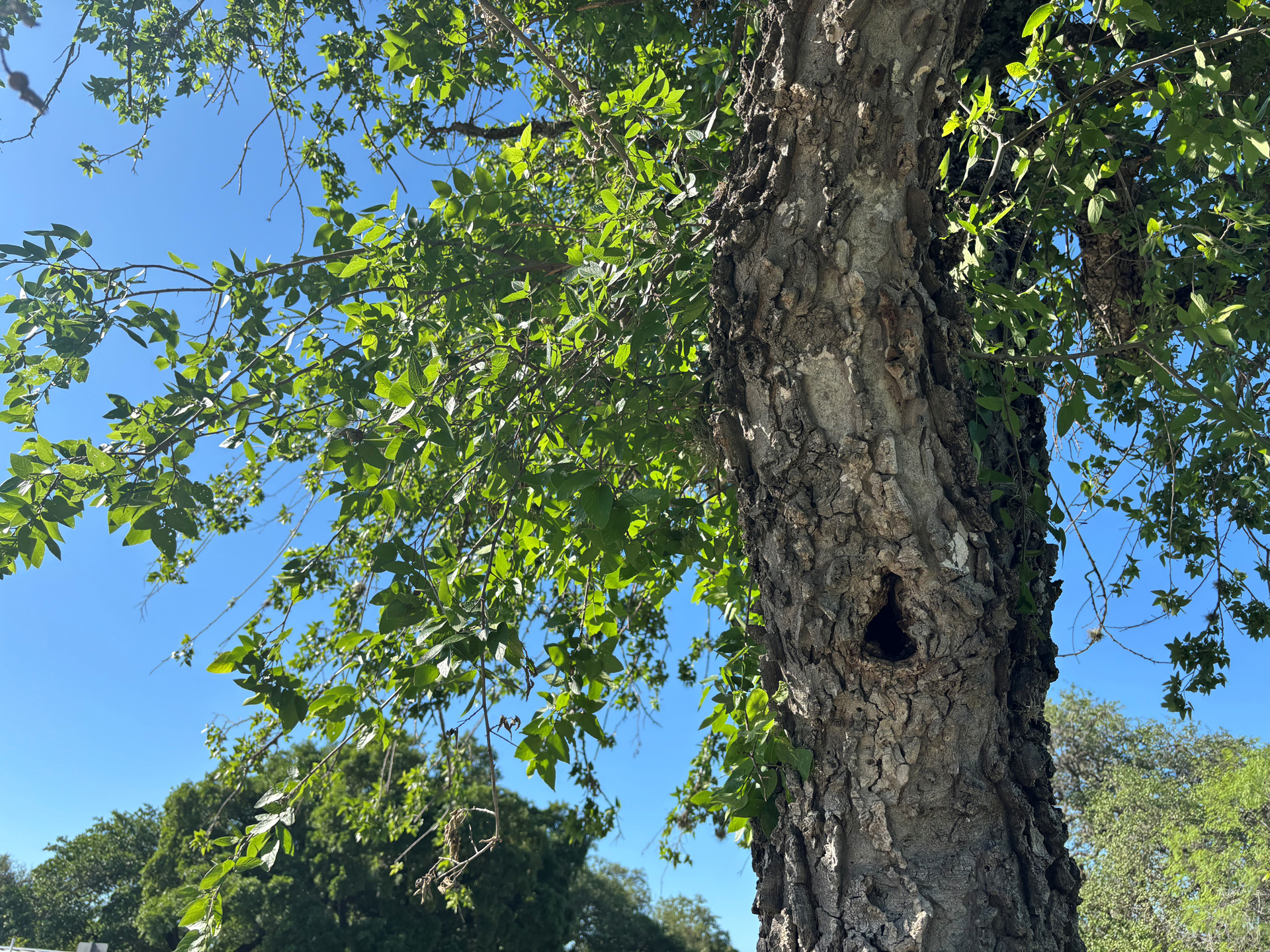Wishing for a beautiful, fast-growing tree that’s free, needs zero irrigation and is a wildlife haven? Sounds too good to be true, but it does exist!
Few things offer relief from the scorching Texas summer like the shade of a well-placed tree. But replacing an old tree can be a daunting task, requiring careful consideration of factors like species, growth rate and water requirements.
What if there was a solution that checked all the boxes, offering beauty, fast growth, ecological benefits and low maintenance – and even came with free delivery and installation? Enter the sugar hackberry tree (Celtis laevigata), a hidden gem often overlooked in landscaping discussions.

Despite its reputation as a “trash tree,” the sugar hackberry boasts a plethora of desirable qualities. Its full, bright green canopy with graceful drooping branches can reach heights of up to 80 feet and nearly as wide, providing ample shade in a relatively short time frame. Moreover, its fast growth rate ensures that you’ll enjoy its benefits within your lifetime, with some seedlings reaching their mature height in just 20 years. (It is important to note that hackberries are not appropriate right next a house because even with careful pruning they can drop limbs as they age. Give them plenty of space — at least 50 feet from the house.)
One of the most remarkable features of the sugar hackberry is its ecological value. Serving as a haven for songbirds, this tree produces sweet berries (technically drupes) with a date-like taste that attracts various wildlife species. Additionally, it acts as a larval host for butterflies like the emperor and question mark, adding to its allure for nature enthusiasts.

Perhaps the most enticing aspect of the sugar hackberry is its low maintenance requirements. Unlike many other trees, it thrives on neglect, making it an ideal choice for those seeking a hassle-free landscaping option. Simply stop mowing a section of your yard, and a hardworking hackberry may volunteer to fill the space. To jumpstart this process, place a tomato cage there, birds will perch, poop et voila — free hackberry!
Furthermore, the sugar hackberry’s resilience to drought and freeze sets it apart even from other native species. While transplanted trees often require extensive watering during their initial years, wild hackberries thrive without any irrigation, making them a sustainable choice for water-conscious gardeners.
In conclusion, the sugar hackberry is a true gem of the Texas landscape, offering dappled shade, ecological benefits, and low maintenance in abundance. By giving this underrated tree a chance, you may just find yourself pleasantly surprised by its many virtues as it grows and flourishes in your yard.



